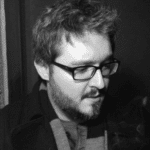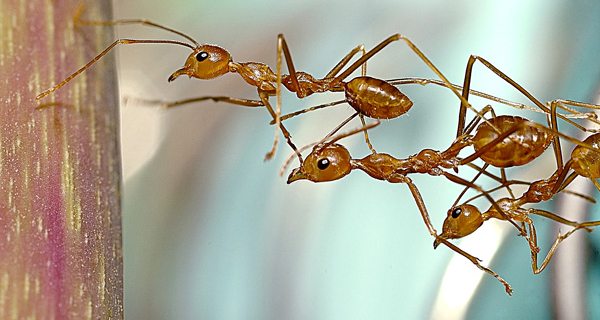When it comes to complex tasks like building a house, many people with different skills work together to accomplish a single, larger goal. Instead of trying to create a perfect robot capable of building a house solo, could scientists replicate how humans function and make a “swarm” of imperfect robots capable of working together to accomplish complex tasks?
This is the question Dr. Jekan Thanga hopes to answer. Thanga is one of the leading researchers who are applying bio-inspired neuro-evolutionary methods to robotics, and heads up Arizona State University’s Space and Terrestrial Robotic Exploration Laboratory.
While the terms may seem like the stuff of science fiction, neuro-evolutionary methods actually take their inspiration from the world around us. Says Thanga, “neuro-evolutionary methods are inspired by the brain cells and nervous systems of multi-cellular organisms.” Neuro-evolutionary methods look at the “control systems” of living organisms and try to understand how they work. “We’re trying to understand the basics of how these individual cells work together as a group to come up with cohesive decisions.”
The starting point for this research is artificial neural networks, which McCulloch and Pitts pioneered in 1943 by creating a computational model for neural networks based on mathematics and algorithms. Much of the early research into artificial neural networks focused on mapping and understanding the electrical activity of neural networks. Dr. Thanga’s research builds on this by trying to understand “the interplay between electrical and chemical communication between cells.”
The roots of Dr. Thanga’s research lie in Darwinian evolution. Just as farmers used to breed specific traits into animals, “we do the same towards developing robust controllers, particularly in multi-robot systems.” The goal is getting robots to work together cohesively towards solving a task. While the algorithms and science behind the process is quite complex, Dr. Thanga says the process itself is quite simple.
“We define a task, and then set a structure by which accomplishing that be quantitatively studied; where zero is bad, and one is absolutely brilliant. […] Next, what we have to provide is the library of behaviors that these robots may have access to.”
Some of these behaviors may be useful, and others may not, but they represent all the behaviors the robots have access to. A library of sensory inputs is also provided to the robots, in addition to a library of training scenarios. “We provide this whole mixture of ‘things’ and then let the controllers be selected from this evolutionary process.” Over many generations, the robots that are able to “make a dent” in solving the task are allowed to metaphorically reproduce towards the eventual goal of solving the task.
When it comes to solving these tasks, Dr. Thanga has discovered that there is not one “right” solution. “There is a spectrum of solutions between good and brilliant.” This is where neural networks are especially valuable. “Neural networks are generalized. If you don’t know what function you need to use to solve a task, a neural network can adapt to solve a task.”
A second important characteristic of Dr. Thanga’s research is task decomposition. Says Thanga, “that’s something that we as humans learn right through our life. It’s our basic life process, taking some complex task that we don’t know how to solve, breaking it up into smaller and smaller chunks, solving the smaller tasks, and then using those solutions to solve the ‘grand’ task.” With evolutionary robotic systems, Dr. Thanga is “teaching” robots to approach problem solving like biological organisms would. While the research takes place in a virtual environment, the results can be programmed into physical robots.
The application of this research in the real world is potentially massive. Dr. Thanga’s current focus is training robots to excavate and build real world structures like landing strips, or building the foundations of buildings. The advantage of using multiple robots to accomplish a task as opposed to a single robot lies in, “using multiple imperfect individuals working together to accomplish a task, as opposed to needing one perfect individual to accomplish the task.”
Using many “imperfect” robots as opposed to one “perfect” robot lowers costs and allows for automation of complex tasks such as installing and maintaining solar farms, mining, construction, and other industrial tasks. Modeling the robots on biological neural systems grants them the ability to adapt to changing conditions just as humans do. And as Dr. Thanga’s virtual robots are translated into the physical world, opportunities for accomplishing tasks in environments not suited for humans becomes more of a reality.





















